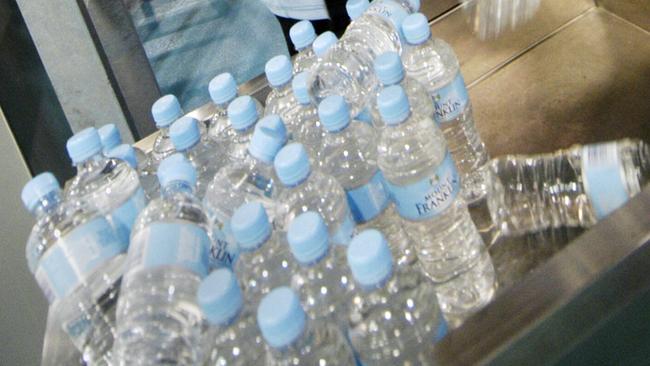World’s biggest study finds array of harms from common plastics
The finding that the chemicals in many common products are associated with a wide range of health risks is ‘a red flag for the world’, a researcher said.

The world’s first major scientific review into the effects of plastics and microplastics chemicals on human health has found that the chemicals in many common products are associated with a wide range of health risks, including poor birth outcomes and miscarriage, infertility, metabolic disease and endocrine dysfunction.
Australian researchers who carried out the study say it “categorically proves” that none of the chemicals examined, including BPA, flame retardants, PFAS and an array of other common chemicals found in plastics that infiltrate people’s bodies in small quantities every day, can be considered safe.
“This is a red flag for the world,” said Sarah Dunlop, head of plastics and human health at the Minderoo Foundation. “We must minimise our exposure to these plastic chemicals, as well as the many that haven’t yet been assessed for human health outcomes but are known to be toxic.”
The peer-reviewed study published in the Annals of Global Health by Australian doctors and academics associated with the Perth-based Minderoo Foundation was an umbrella review – considered the highest level of scientific synthesis – of almost 800 published studies and 52 systematic reviews into the effects of plastics chemicals.
“To our knowledge, this study is first to investigate the complete, high-level, evidence for human health effects of plastics and plastic-associated chemicals across a broad range of plastic chemical groups,” the authors of the study said.
It follows a Florey Institute study earlier this month that for the first time established a biological pathway between the plastic chemical bisphenol A (BPA) and autism spectrum disorder.
The umbrella review investigated five classes of chemicals including bisphenols and phthalates, PBDE, PCBs and PFAS, known as a ‘forever chemical’ used at defence bases that has been found in several crucial water supply plants. Also included were plasticisers and flame retardants – two classes of functional additive with the highest concentration ranges in plastic.
The study found that none of the investigated classes of chemicals are safe with statistically significant harmful impacts found for fertility in men and women, birth weight in babies, children’s neurodevelopment, and the development of Type 2 diabetes, obesity, cardiovascular disease and asthma.
Bisphenol A (BPA) – commonly found in food packaging, water bottles and cosmetics – was found to be associated with genital changes in infants, type 2 diabetes in adults, insulin resistance in children and adults, polycystic ovary syndrome, obesity and hypertension in children and adults and cardiovascular disease.
Phthalates plasticisers – found in a wide array of plastic products including nail polish, children’s toys, cosmetics and medical products – were associated with spontaneous pregnancy loss, genital changes in boys, and insulin resistance in children and adults.
There were additional associations between certain phthalates and decreased birth weight, type 2 diabetes in adults, precocious puberty in girls, reduced sperm quality, endometriosis, adverse cognitive development and intelligence quotient (IQ) loss, adverse fine motor and psychomotor development and elevated blood pressure in children and asthma in children and adults.
Other types of chemicals were similarly associated with pregnancy loss, decreased birth weight, endometriosis, bronchitis in infants, obesity, and the cancers Hodgkin’s lymphoma and breast cancer.
It is next to impossible for an individual to limit completely their exposure to harmful plastics chemicals, although experts advise reducing consumption of water in plastic bottles, reducing consumption of packaged food, and not heating plastic containers in the microwave.
Regulation of production and plastics chemicals in products is the only way to protect human health. But there is very little regulation of plastic chemicals in Australia or most other countries.
A Global Plastics Treaty is currently being negotiated that advocates of reform hope will set the stage for recognition of the substances’ harmful health effects and increase pressure on governments to regulate.
Professor Dunlop said there was now no doubt that plastics chemicals were harmful to human health.
“Plastic is not the safe, inert material we thought it was,” she said. “It’s made of 16,000 chemicals or so. We are exposed. We’re exposed across our lifespan, and there are health impacts across our lifespan.
“We’ve got to pull together and act fast, because plastic production is soaring. We need to really get the cause of the problem and reduce or cap plastic production.
“The second thing is to take a really good, hard look at the chemicals, because at the moment, unlike pharmaceuticals, which are highly regulated, industrial chemicals are being produced at a rate that is from this just outstripping our ability to identify what’s being produced and outstripping our ability to find out whether or not it’s harmful.”






To join the conversation, please log in. Don't have an account? Register
Join the conversation, you are commenting as Logout